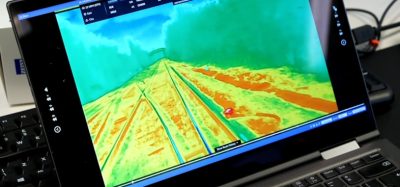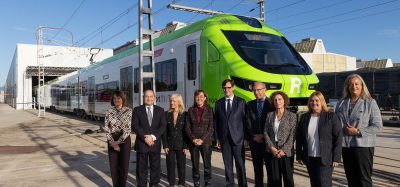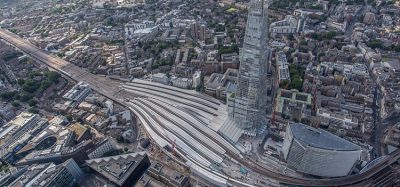Network Rail’s operating strategy
Posted: 1 August 2013 | | No comments yet
Network Rail is embarking on a process that will revolutionise signalling in Britain and allow it to run more trains, more punctually and more efficiently than ever before. The company has mapped out where and how it will run the network of the future, and this has been driven by the fact that our railway is more popular than it has ever been on a network that is half the size it was in the 1960s. Projections show that this growth will continue, with demand for passenger and rail freight services expected to double over the next 30 years.
We currently have over 800 signalling locations – including around 500 Victorian signal boxes – many with legacy equipment which is becoming difficult and expensive to operate and maintain. This equipment cannot keep up with today’s fast paced network and is limiting the potential of Britain’s railway.
Network Rail is embarking on a process that will revolutionise signalling in Britain and allow it to run more trains, more punctually and more efficiently than ever before. The company has mapped out where and how it will run the network of the future, and this has been driven by the fact that our railway is more popular than it has ever been on a network that is half the size it was in the 1960s. Projections show that this growth will continue, with demand for passenger and rail freight services expected to double over the next 30 years. We currently have over 800 signalling locations – including around 500 Victorian signal boxes – many with legacy equipment which is becoming difficult and expensive to operate and maintain. This equipment cannot keep up with today’s fast paced network and is limiting the potential of Britain’s railway.
Network Rail is embarking on a process that will revolutionise signalling in Britain and allow it to run more trains, more punctually and more efficiently than ever before. The company has mapped out where and how it will run the network of the future, and this has been driven by the fact that our railway is more popular than it has ever been on a network that is half the size it was in the 1960s. Projections show that this growth will continue, with demand for passenger and rail freight services expected to double over the next 30 years.
We currently have over 800 signalling locations – including around 500 Victorian signal boxes – many with legacy equipment which is becoming difficult and expensive to operate and maintain. This equipment cannot keep up with today’s fast paced network and is limiting the potential of Britain’s railway.
Therefore, Network Rail plans to consolidate all signalling and control activity into 12 state-of-the-art Rail Operating Centres (ROCs) over the next 30 years – with around 80% moving within 15 years. The ROCs are a mixture of existing and new buildings, using a modular design to ensure consistency and interoperability across the network:
● Cardiff (existing)
● Derby (existing)
● Didcot (existing + upgrade, 2014)
● Edinburgh (existing) ● Gillingham (existing)
● Glasgow (existing) ● Basingstoke (new – 2015)
● Manchester (new – 2014)
● Romford (new – 2014)
● Rugby (new – 2015)
● Three Bridges (new – 2013)
● York (new – 2014).
This new way of working will also include a traffic management (TM) system, building on the experience of railways that already use TM, using what we have seen from the best in the world including Japan and elsewhere in Europe.
The introduction of TM in other countries has seen improvements in punctuality overnight thanks to its ability to better regulate trains at junctions and other pinchpoints.
When you combine this with the efficiencies inherent in modernising signalling (the reduction in costly lineside assets and a reduction in overall signalling headcount) this will save the railway an estimated £250 million a year – further reducing the cost of Britain’s railway. This more than compensates for the upfront costs of accelera – ting our modernisation process.
A more affordable railway with more pass – engers will help create a sustainable future and we can only continue to justify the money we are investing in the railway if we make con – tinual efforts to increase efficiency and improve the service.
In fact, far from being an unheard of development, our operating strategy is simply continuing the process – albeit at a significantly accelerated speed – that has seen more than 10,000 signal boxes in the 1900s reduced to around 800 locations today. Where we once replaced mechanical boxes with relay-based power signalling, we are now using the latest computer technology to increase the pace. In fact, during the 1970s and 1980s, British Rail closed approximately 100 signal boxes per year; since privatisation in the early-1990s, with different asset policies and priorities, this dropped to around 10 per year.
Network Rail’s modernisation plan would move this back up to around 50 per year –with a goal to have the entire network controlled from 12 ROCs within 15-30 years.
Why are we doing this?
There is currently a huge variance in signalling systems across the network, with technology in use today spanning more than 150 years. Much of these systems need to be renewed over the next 30 years, so it makes sense to work towards an end goal or vision for modernisation rather than continue piecemeal upgrades.
With the increasing demands placed on the railway (the number of trains has increased by 20% in the last decade and passengers by 50%), we need to move from largely reactive to proactive control of trains – essentially an intelligent system which predicts and prevents conflicts.
We accept that the industry in this country is too expensive and needs to deliver better value for funders – including government and fare payers. This is part of our plan to make those savings.
How will it work?
Our new ROCs will cover much wider areas than traditional power boxes and they will also become regional control hubs with facilities not just for Network Rail but for our partners in the train operating companies. This will encourage greater integration and offer greater support when recovering from delays and perturbation.
Of course, one of the primary drivers for developing traffic management is to make regulating decisions earlier. To take full advant – age of that we need to move away from routebased signalling to speed-based technology.
ERTMS has been chosen as the preferred method of future re-signalling, not just because it is now the European standard, but also because it provides a proven technology that will help get more from our network.
ERTMS optimises performance by allowing the maximum permissible speed for each class of train, rather than fixed signal sections. And by giving drivers target speeds instead of relying on red and green signals, trains can be slowed miles before any potential conflicting movements – keeping trains moving, reducing power con sumption and delays.
Of course, ERTMS will not roll-out at the same pace as the new traffic management technology, as that is predicated on existing re-signalling. For that reason a stop-gap is being designed to give drivers advisory speeds, with movement authority still coming from traditional signalling.
This builds on the existing driver advisory systems (DAS) that are already in use with some operators. Currently these standalone systems compare the train’s position to the timetable, but are unable to locate other trains or aid regulation. Connected DAS would be linked directly to the traffic management system and give the drivers a speed indication that will make the most of coasting and regenerative braking to save energy, but will also predominantly avoid forthcoming conflictions allowing the service to run exactly to the planned train path.
By bundling all these technologies together with the best modern buildings designed to foster greater links between operators and signallers, we can offer a step-change in the performance and resilience of the railway.
What about heritage?
We recognise that our plans will result in many old signal boxes being left without a role to play on our railway.
Therefore, we’ve been working with English Heritage, Historic Scotland, Cadw (Welsh Assembly Government) and the National Railway Museum to make sure there is a record of signal boxes for future generations.
A comprehensive review of all signal boxes has been carried out and a process put in place to identify boxes which are of particular historical significance and should be preserved.
We’re working with a number of community groups interested in acquiring a signal box and will support their proposals where feasible/practical.
Global Railway Review Autumn/ Winter Issue 2025
Welcome to 2025’s Autumn/ Winter issue of Global Railway Review!
The dynamism of our sector has never been more apparent, driven by technological leaps, evolving societal demands, and an urgent global imperative for sustainable solutions.
>>> Read the issue in full now! <<<







